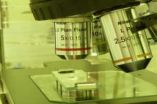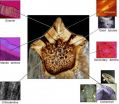(Press-News.org) Potsdam-Rehbruecke/Berlin – A research team led by Anna Floegel of the German Institute of Human Nutrition (DIfE) and Tobias Pischon of the Max Delbrueck Center for Molecular Medicine (MDC) has identified 14 novel biomarkers for type 2 diabetes. They can serve as basis for developing new methods of treatment and prevention of this metabolic disease. The biomarkers can also be used to determine diabetes risk at a very early point in time. At the same time the markers enable insight into the complex mechanisms of this disease, which still have not been completely elucidated. (Diabetes, A. Floegel et al., 2012; DOI 10.2337/db12-0495)*.
The researchers studied the blood of study participants from three different studies with respect to their metabolites (metabolomics). The study was based on data and blood samples of the prospective EPIC-Potsdam** study with more than 27,500 study participants, the Tuebingen family study and the KORA study***. The study was conducted in collaboration with the German Center for Diabetes Research (DZD) and funded by the Federal Ministry of Education and Research (BMBF).
Metabolomics is still a young research field and serves the understanding of biological systems. It studies the dynamic network of metabolites of an organism and thus provides insight into ongoing biochemical processes. Metabolites have quite diverse functions. For instance, they play a role in cellular communication and regulation, transport energy or are building material for the cells. Changes in metabolite concentrations may therefore directly reflect alterations in metabolism and thereby, shed light on the pathogenesis or presence of disease.
The aim of the current study was to identify metabolites in blood which provide insight into the pathomechanisms of type 2 diabetes and in addition can be used as biomarkers to determine the disease risk. To this end, the researchers studied a total of 4,000 blood samples. About 3,000 of these samples came from the EPIC-Potsdam study, nearly 900 samples from the KORA study in Augsburg and 76 from the study in Tuebingen. At the time the blood sample was taken, none of the study participants suffered from type 2 diabetes: However, during the average follow-up time of seven years, 800 Potsdam study participants and 91 Augsburg participants were diagnosed with type 2 diabetes. The 76 participants in the Tuebingen study were already classified at the beginning of the study as individuals at high risk for type 2 diabetes. At the time the blood sample was taken, however, they were still healthy.
163 metabolites analyzed per blood sample
Jerzy Adamski and his team at the Institute of Experimental Genetics of Helmholtz Zentrum Muenchen analyzed the concentrations of 163 metabolites per blood sample. Fourteen of these metabolites exhibited a strong association with the development of type 2 diabetes.
"In addition to simple sugars, the 14 identified metabolites include various protein components and choline-containing phospholipids which play a role in the structure of cell membranes and in the transport of blood lipids," said Anna Floegel, lead author of the study. "Our findings particularly indicate a previously unknown role of phospholipids in type 2 diabetes development. This is a first clue which should definitely be pursued."
"At the same time the metabolites can also be used as biomarkers to precisely determine the risk of diabetes at a very early stage, since the study is based on prospective data, that is data that were collected before the onset of the disease," said Tobias Pischon, who led the study. "The results of the new metabolomic analysis thus provide a good basis for developing new treatment and prevention methods."
INFORMATION:
*Identification of Serum Metabolites Associated with Risk of Type 2 Diabetes Using a Targeted Metabolomic Approach
Anna Floegel1*; Norbert Stefan2; Zhonghao Yu3; Kristin Mühlenbruch4; Dagmar Drogan1; Hans-Georg Joost5; Andreas Fritsche2; Hans-Ulrich Häring2; Martin Hrabě de Angelis6; Annette Peters7; Michael Roden8,9; Cornelia Prehn6; Rui Wang-Sattler3; Thomas Illig3,10; Matthias B. Schulze4; Jerzy Adamski6; Heiner Boeing1; and Tobias Pischon1,11.
From the 1Department of Epidemiology, German Institute of Human Nutrition Potsdam-Rehbruecke, Nuthetal, Germany; the 2Department of Internal Medicine IV, Divisions of Endocrinology, Diabetology, Nephrology, Vascular Disease and Clinical Chemistry, University of Tuebingen, Tuebingen, Germany; the 3Research Unit of Molecular Epidemiology, Helmholtz Zentrum Muenchen, German Research Center for Environmental Health, Neuherberg, Germany; the 4Department of Molecular Epidemiology, German Institute of Human Nutrition Potsdam-Rehbruecke, Nuthetal, Germany; the 5Department of Pharmacology, German Institute of Human Nutrition Potsdam-Rehbruecke, Nuthetal, Germany; the 6Institute of Experimental Genetics, Helmholtz Zentrum Muenchen, German Research Center for Environmental Health, Neuherberg, Germany; the 7Institute of Epidemiology II, Helmholtz Zentrum Muenchen, German Research Center for Environmental Health, Neuherberg, Germany; the 8Institute of Clinical Diabetology, German Diabetes Center, Leibniz Center for Diabetes Research at Heinrich Heine University, Duesseldorf, Germany; the 9Department of Metabolic Diseases, University Clinics, Duesseldorf, Germany; the 10Hannover Unified Biobank, Hannover Medical School, Hannover, Germany; the 11Molecular Epidemiology Group, Max Delbrueck Center for Molecular Medicine (MDC) Berlin-Buch, Berlin, Germany
Background information:
** EPIC stands for European Prospective Investigation into Cancer and Nutrition. It is one of the largest prospective studies investigating the relationships between diet, cancer and other chronic diseases such as type 2 diabetes. Ten European countries with a total of 519,000 female and male adult test subjects are participating in the EPIC study. In Germany the German Cancer Research Center (DKFZ) in Heidelberg and the DIfE are part of the multicenter study. The EPIC-Potsdam study led by Heiner Boeing includes more than 27,500 adult study participants.
When evaluating a prospective study it is important that at the beginning of the study the participants do not yet have the disease under investigation. Thus, the risk factors for a given disease can be detected before disease onset, thus preventing as far as possible a distortion of the data by the disease– a decisive advantage over retrospective studies.
For information on the EPIC-Potsdam Study see also:
http://www.dife.de//forschung/projekte/epic.php,
For information on the Tuebingen Family Study, see also:
http://www.med.uni-tuebingen.de/Forschung/Kliniken/Medizinische+Klinik/Innere+Medizin+IV.html
For information on the Augsburg KORA Study, see also:
http://www.helmholtz-muenchen.de/kora/.
The MDC combines basic research in molecular biology with clinical research. Building on insights gained from research, the aim of the MDC is to develop new and more effective strategies for the diagnosis and treatment of serious diseases and to explore possibilities for preventing their onset. The research activities of the MDC focus on cardiovascular research, metabolic diseases, cancer and diseases of the nervous system. The MDC is one of 18 research centers of the Helmholtz Association, the largest research organization in Germany and is financed to 90 percent by the federal government and to 10 percent by the state of Berlin.
The Helmholtz Association makes its contribution to solving major and urgent challenges faced by society, science and industry by undertaking top-flight scientific research in six research areas: energy, earth and environment, health, key technologies, structure of matter, aeronautics, space and transport. The Helmholtz Association is the largest science organization in Germany with a staff of 31,745 in 18 research centers and an annual budget of around EUR 3.4 billion. Its work follows the tradition of the great natural scientist Hermann von Helmholtz (1821-1894). (http://www.helmholtz.de/)
The DIfE is a member of the Leibniz Association. It explores the causes of nutrition-related diseases to develop new strategies for prevention, treatment and dietary recommendations. The research interests of the DIfE are obesity, diabetes, cardiovascular diseases and cancer. More at http://www.dife.de. The DIfE is also a partner of the DZD, which was founded in 2009 and is funded by the Federal Ministry of Education and Research. More at http://www.dzd-ev.de.
The Leibniz Association comprises 86 institutions conducting application-oriented basic research and providing scientific infrastructure. In total, around 16,800 people work for Leibniz institutions – including 7,800 scientists and researchers – with an annual budget of nearly EUR 1.4 billion. The Leibniz Association is characterized by the diversity of research topics and disciplines in which it is engaged. The research museums of the Leibniz Association preserve and explore the natural and cultural heritage. They are also the showcase of research as well as places of learning and fascination for science. More at http://www.leibniz-gemeinschaft.de.
Contact:
Professor Tobias Pischon
Molecular Epidemiology Research Group
Max Delbrueck Center for Molecular Medicine (MDC) Berlin-Buch
Robert-Rössle-Straße 10
13125 Berlin
Phone: +49 (0)30/ 9406 - 4563
e-mail: tobias.pischon@mdc-berlin.de
Barbara Bachtler
Head of the Press Department
Max Delbrueck Center for Molecular Medicine (MDC) Berlin-Buch
in the Helmholtz Association
Robert-Rössle-Straße 10, 13125 Berlin
Phone: +49 (0)30/ 9406 - 3896
Fax: +49 (0)30/ 9406 - 3833
e-mail: presse@mdc-berlin.de
http://www.mdc-berlin.de/
Anna Floegel
Department of Epidemiology
German Institute of Human Nutrition
Potsdam-Rehbruecke (DIfE)
Arthur-Scheunert-Allee 114-116
14558 Nuthetal/ Germany
Tel.: +49 (0)33200/ 88 - 2717
e-Mail: anna.floegel@dife.de
Dr. Gisela Olias
Head of Press and Public Relations
German Institute of Human Nutrition
Potsdam-Rehbruecke (DIfE)
Arthur-Scheunert-Allee 114-116
14558 Nuthetal/Germany
Phone: +49 (0)33200/ 88 – 2278; - 2335
e-mail: olias@dife.de
or: presse@dife.de
http://www.dife.de
14 new biomarkers identified for type 2 diabetes
Basis for developing new methods for treatment and prevention
2012-10-05
ELSE PRESS RELEASES FROM THIS DATE:
Asteroid fragments could hint at the origin of the solar system
2012-10-05
The tiny pieces of rock – at 50-100 micrometers smaller than a human hair – have been captured from asteroid Itokawa by the Japanese mission Hayabusa. They were carefully unpacked by experts at the University's School of Earth, Atmospheric and Environmental Sciences.
It is the first time samples from an asteroid have been returned to Earth. Only about 70 samples have been released for international analysis – seven of these are being studied at the University.
The Hayabusa mission is part of a continuing effort to understand how asteroids, which are leftovers from ...
Everyday evolution
2012-10-05
Take a good look around on your next nature hike. Not only are you experiencing the wonders of the outdoors – you're probably also witnessing evolution in action.
New research from the University of Toronto Mississauga (UTM) on the effect of insects on plant populations has shown that evolution can happen more quickly than was previously assumed, even over a single generation. The study is to be published in the Oct. 5 issue of Science.
"Scientists have long hypothesized that the interaction between plants and insects has led to much of the diversity we see among plants, ...
Abortion rates plummet with free birth control
2012-10-05
Providing birth control to women at no cost substantially reduced unplanned pregnancies and cut abortion rates by 62 percent to 78 percent over the national rate, a new study shows.
The research, by investigators at Washington University School of Medicine in St. Louis, appears online Oct. 4 in Obstetrics & Gynecology.
Among a range of birth control methods offered in the study, most women chose long-acting methods like intrauterine devices (IUDs) or implants, which have lower failure rates than commonly used birth control pills. In the United States, IUDs and implants ...
How ketamine defeats chronic depression
2012-10-05
Many chronically depressed and treatment-resistant patients experience immediate relief from symptoms after taking small amounts of the drug ketamine. For a decade, scientists have been trying to explain the observation first made at Yale University.
Today, current evidence suggests that the pediatric anesthetic helps regenerate synaptic connections between brain cells damaged by stress and depression, according to a review of scientific research written by Yale School of Medicine researchers and published in the Oct. 5 issue of the journal Science.
Ketamine works on ...
UCLA astronomers discover star racing around black hole at center of our galaxy
2012-10-05
UCLA astronomers report the discovery of a remarkable star that orbits the enormous black hole at the center of our Milky Way galaxy in a blistering 11-and-a-half years — the shortest known orbit of any star near this black hole.
The star, known as S0-102, may help astronomers discover whether Albert Einstein was right in his fundamental prediction of how black holes warp space and time, said research co-author Andrea Ghez, leader of the discovery team and a UCLA professor of physics and astronomy who holds the Lauren B. Leichtman and Arthur E. Levine Chair in Astrophysics. ...
Climate sceptics more prominent in UK and US media
2012-10-05
Climate sceptics are being given a more prominent, and sometimes uncontested, voice in UK and US newspapers in contrast to other countries around the world, new research suggests.
The findings have been published today, 5 October, in IOP Publishing's journal Environmental Research Letters, as part of a study looking at how climate scepticism manifested itself in the print media of the US, UK, Brazil, China, India and France during a 3-month period which included 'Climategate' in 2009/10 and a second period which covered the IPCC's Fourth Assessment Report in 2007.
In ...
Maths sheds light on what delays in getting pregnant means for prospects of having a baby
2012-10-05
A new mathematical method can help to predict a couple's chances of becoming pregnant, according to how long they have been trying.
The model may also shed light on how long they should wait before seeking medical help.
For example, the researchers have found that, if the woman is aged 35, after just six months of trying, her chance of getting pregnant in the next cycle is then less than 10 per cent.
The analysis, developed at Warwick Medical School at the University of Warwick and the London School of Economics, uses the number of menstrual cycles over which the ...
Plants adapt their defenses to the local pest community
2012-10-05
Herbivorous insects, such as aphids, damage plants and can substantially reduce yields in agricultural settings; however, they can play a major role in maintaining genetic diversity. Ecologists Tobias Züst and Lindsay Turnbull from the University of Zurich together with colleagues from California and Great Britain demonstrated the importance of variation in herbivore communities using the model plant, Arabidopsis thaliana, also known as wall cress. According to Züst, the work is one of the first experimental confirmations of a forty-year-old theory that herbivorous insects ...
Duck-bill dinosaurs had plant-pulverizing teeth more advanced than horses
2012-10-05
A team of paleontologists and engineers has found that duck-billed dinosaurs had an amazing capacity to chew tough and abrasive plants with grinding teeth more complex than those of cows, horses, and other well-known modern grazers. Their study, which is published today in the journal Science, is the first to recover material properties from fossilized teeth.
Duck-bill dinosaurs, also known as hadrosaurids, were the dominant plant-eaters in what are now Europe, North America, and Asia during the Late Cretaceous about 85 million years ago. With broad jaws bearing as many ...
Medication use higher among overweight, obese kids
2012-10-05
(Edmonton) Overweight children are far more likely to take prescription medications than children of a normal weight—a trend that adds to already higher health-care costs for treating childhood obesity, according to new research from the University of Alberta.
Researchers from the School of Public Health analyzed the medication use of more than 2,000 Canadian children through the 2007 to 2009 Canadian Health Measures Survey. They found that overweight and obese kids aged 12 to 19 years were 59 per cent more likely than their normal-weight peers to take prescription medication.
Co-author ...
LAST 30 PRESS RELEASES:
Making lighter work of calculating fluid and heat flow
Normalizing blood sugar can halve heart attack risk
Lowering blood sugar cuts heart attack risk in people with prediabetes
Study links genetic variants to risk of blinding eye disease in premature infants
Non-opioid ‘pain sponge’ therapy halts cartilage degeneration and relieves chronic pain
AI can pick up cultural values by mimicking how kids learn
China’s ecological redlines offer fast track to 30 x 30 global conservation goal
Invisible indoor threats: emerging household contaminants and their growing risks to human health
Adding antibody treatment to chemo boosts outcomes for children with rare cancer
Germline pathogenic variants among women without a history of breast cancer
Tanning beds triple melanoma risk, potentially causing broad DNA damage
Unique bond identified as key to viral infection speed
Indoor tanning makes youthful skin much older on a genetic level
Mouse model sheds new light on the causes and potential solutions to human GI problems linked to muscular dystrophy
The Journal of Nuclear Medicine ahead-of-print tip sheet: December 12, 2025
Smarter tools for peering into the microscopic world
Applications open for funding to conduct research in the Kinsey Institute archives
Global measure underestimates the severity of food insecurity
Child survivors of critical illness are missing out on timely follow up care
Risk-based vs annual breast cancer screening / the WISDOM randomized clinical trial
University of Toronto launches Electric Vehicle Innovation Ontario to accelerate advanced EV technologies and build Canada’s innovation advantage
Early relapse predicts poor outcomes in aggressive blood cancer
American College of Lifestyle Medicine applauds two CMS models aligned with lifestyle medicine practice and reimbursement
Clinical trial finds cannabis use not a barrier to quitting nicotine vaping
Supplemental nutrition assistance program policies and food insecurity
Switching immune cells to “night mode” could limit damage after a heart attack, study suggests
URI-based Global RIghts Project report spotlights continued troubling trends in worldwide inhumane treatment
Neutrophils are less aggressive at night, explaining why nighttime heart attacks cause less damage than daytime events
Menopausal hormone therapy may not pose breast cancer risk for women with BRCA mutations
Mobile health tool may improve quality of life for adolescent and young adult breast cancer survivors
[Press-News.org] 14 new biomarkers identified for type 2 diabetesBasis for developing new methods for treatment and prevention





